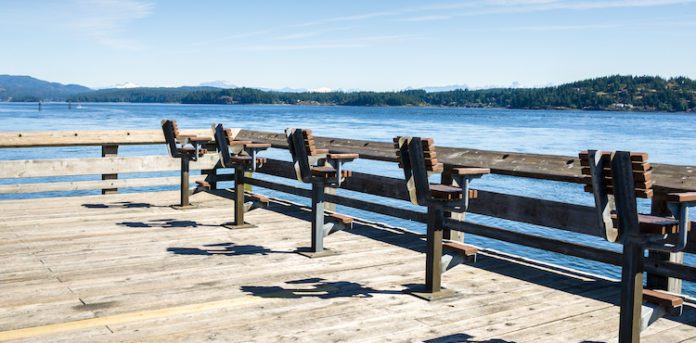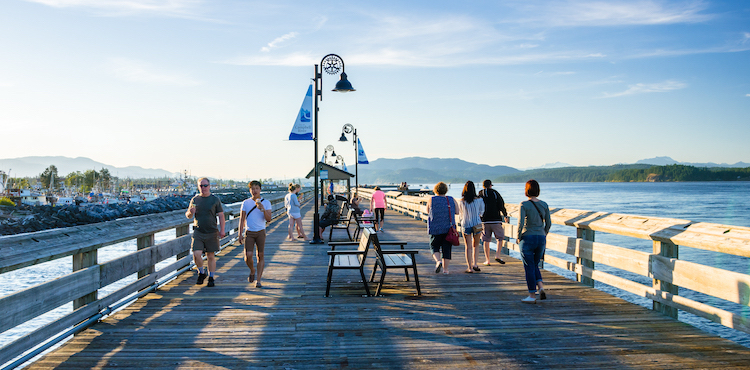Most people don’t have a boat to fish in the ocean, but there are other ways to catch fish. You can catch fish on any pier and any shoreline in the right season and at the right time of return. Fishing from a pier and shoreline can be very productive in heavy bait gatherings, for rockfish, and during the salmon returns. In this article, we’ll help you improve your pier and shoreline jigging game.
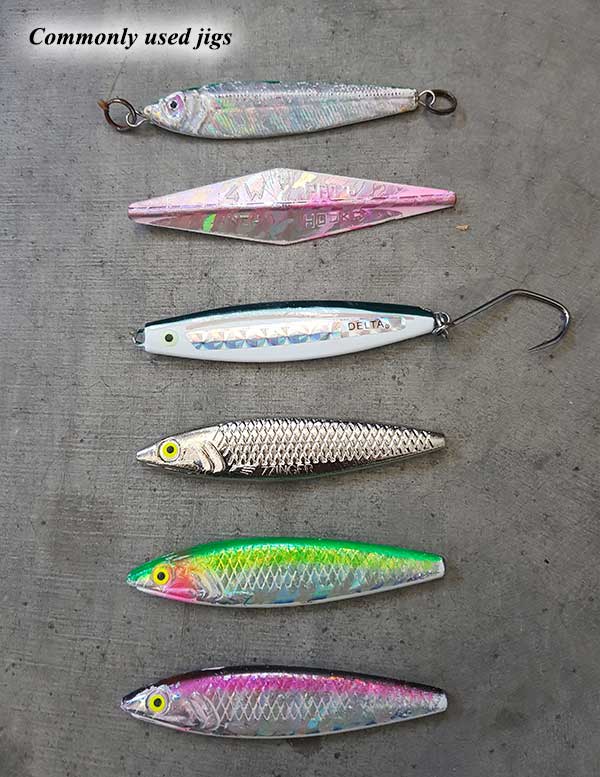
For fishing gear, you will need a medium-heavy power, fast action 8’ to 10’6” fishing rod (bait casting or spinning reel) and 25-lb mono fishing line. You want to have a stiff rod tip so you can transfer that jigging action to the jig. You’ll want a reel big enough to hold a 250-yard spool or more of fishing line. When you hook into a Chinook at the pier, the fish can spool you [fish taking all the line off your reel] if you don’t have enough line. Buzz Bombs, Zzingers, and other jig lures in various colors will hook fish. White, Pink, and Chartreuse are typical go-to colours for Buzz Bombs. Holographic, Chrome, and Army Truck Zzingers work well, too. Please check your area regulations on maximum weights and what kind of hooks are allowed; for instance, Campbell River Fishing Pier allows 6-oz maximum weights and single barbless hooks. Single barbless 5/0 to 7/0 hooks are standard for fishing for salmon in the ocean. A 1.5-oz to 3-oz jig weight will do fine for most piers and shorelines. Go to your local fishing tackle shop, and the crew there will set you up with everything you need to pier and shoreline fish.
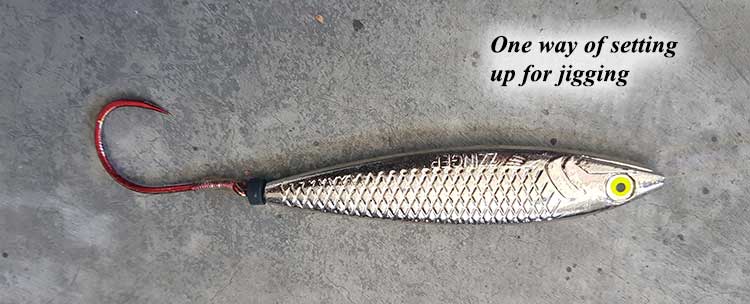
Pier fishing is fun and offers a great atmosphere for everyone. You will meet a lot of other fishermen and spectators there as well as hopefully hooking into a fish. Just a heads up: You will lose many jigs when fishing. Normally there are kelp beds near piers, and there’s a good chance of hooking them. You might even lose your jig at the footings of the pier when retrieving your lure or when casting. Casting the jig off the pier can be a challenge due to people walking behind you when you cast, but there are other ways to cast instead of overhead casting. You can do an under-pier cast outwards. It is the same action as an overhead cast, but done by pointing your rod tip towards the water under the pier. When casting your jig, you want to cast upstream of the tide current flow direction (see the illustration of casting direction depending on tide flow). By casting upstream of the tide current, you allow the jig to drop down with the current to the fish. This is just like drift fishing in a river.
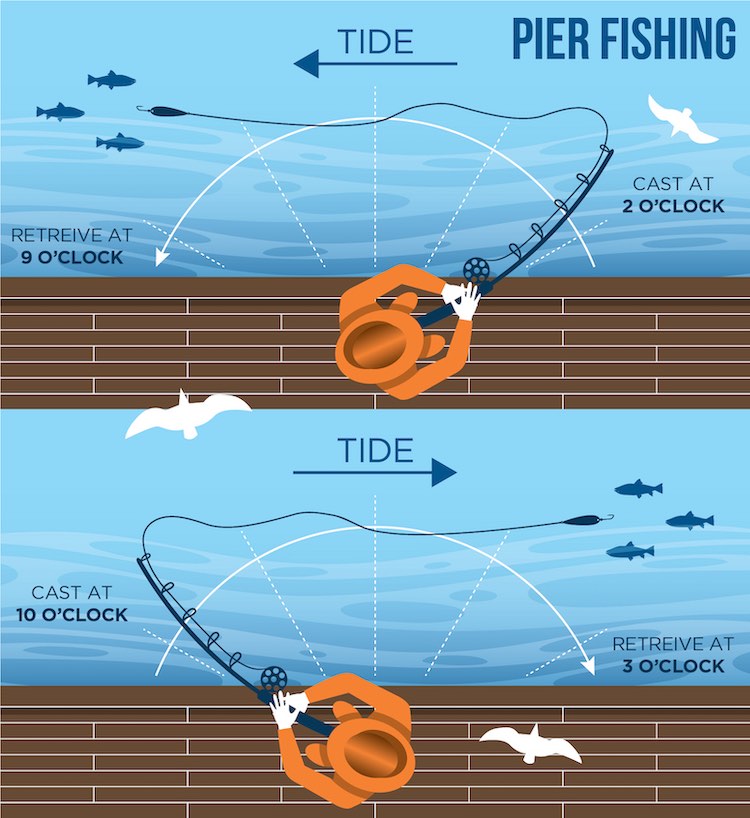
Then you start jigging to imitate a wounded minnow struggling to swim. You want to lift your rod tip up with some force to make that jig dance; lifting your rod tip one to three feet will provide enough action to the jig. After each time you jig, reel in a little bit of line to minimize the slack fishing line to get some sensitivity on the fish bite. Fish bite on the falling action of the jig. Once you hook a fish, yell “Fish On!” so everyone nearby will get their fishing line out of the water so you can have a chance to put the fish in the net. Fighting the fish is stressful but fun, because you are at the mercy of the fish. You can walk around the pier to maneuver the fish around while you fight with it.
Now, netting the fish is interesting. Since you are fishing on a pier that is likely 30 feet above the water, you will have to drop a long-line dip net into the ocean to net the fish. The anglers around you will help you net the fish, which requires a real team effort. The trick to netting the fish is to allow the tide current to drift the fish into the net. This requires tiring out the fish first. Pier fishing is great fun—plus there’s usually an ice cream stand nearby.

Shoreline fishing is almost like pier fishing except you have to find a location that has a steep drop off to some sort of kelp bed or back eddies. Study the charts for shoreline areas and tides for your area. Ask your local tackle shop for more information about where to shore fish around your location. You will fish the same way as on the pier, except you will have a long-arm net to net your fish. You want to try casting the jig on the edge of the kelp beds. By jigging the lure, you can coax some fish out of the kelp beds. As with pier fishing, you will lose a couple jigs while learning how to fish the spot. Once you hook a fish, it is hard to prevent it from entering back into the kelp. They are aggressive, and that is the fun part of shoreline fishing. Casting jigs in back eddies is where you will find some big Chinooks and lingcod hanging around.
Depending on some breakwaters, you might be able to fish off the breakwaters. The typical fish you will be targeting are Chinooks, coho, pinks, lingcod and rockfish. Wear a life jacket when fishing near the shoreline, just in case you fall in the water, especially if there’s a rip tide.
Jigging from the pier and shoreline is another great way of bring home fish. Tight lines, and have fun! ![]()


